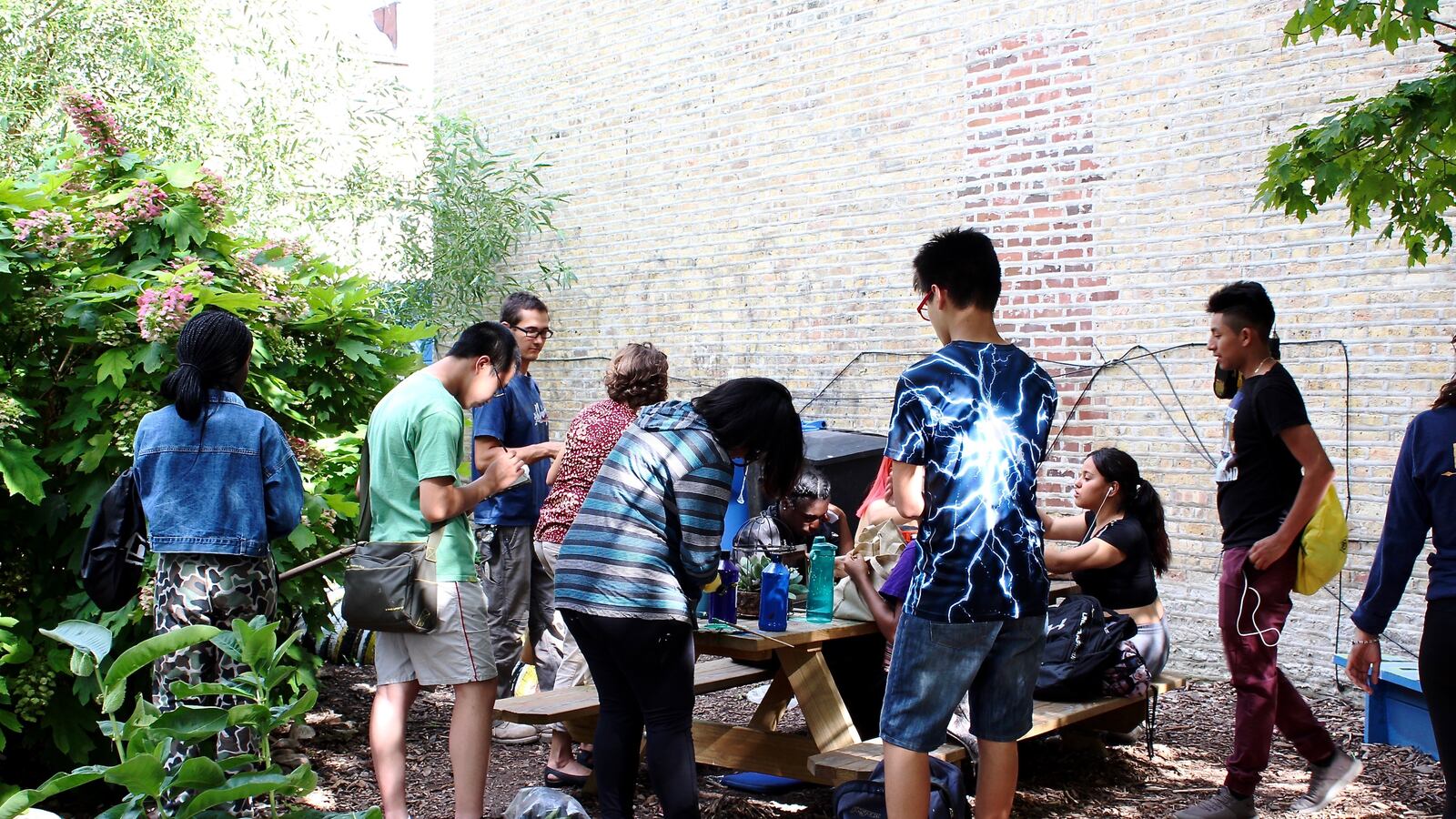Sitting in a brightly lit classroom at Dyett High School in Washington Park, two students bounced around ideas for creating a podcast. Donnie Smith, the director in charge, chimed in. “Just so you know,” she said, “the podcast will be broadcast to 30- to 40,000 people.”
“Wait,” one of the students said, a grin beginning to widen on his face, “it’s getting broadcast?”
The astonished teens were about to get a chance at online fame, one many teens would jump at. Yet the pair were the only ones in a classroom that could seat 150.
It’s an odd predicament shared by many small Chicago groups offering enticing and creative summer opportunities: They can’t get enough teens in the door.
This was the the second week of summer programming run by Art of Culture, a non-profit organization previously known as Donda’s House that runs arts workshops for teenagers and young adults. Art of Culture has more connections than most summer programs: Its cofounder is Grammy-winning Chicago hip-hop artist Rhymefest and it recently was the subject of a Twitter feud involving another cofounder, Kanye West, and his wife, Kim Kardashian. But even with a higher profile than most, Art of Culture has struggled to recruit teen participants this summer, illustrating how hard it can be.
“There are so many good summer programs out there,” Smith said. But it’s mainly one, After School Matters, that has the roots, reach, reputation and budget that leaves newcomers like Art of Culture struggling to attract students and flailing to survive. ASM is an enormous umbrella organization that has funded diverse programs for 13,000 teens this summer. It partners with hundreds of schools and groups, and draws participants by offering them stipends to attend — something few competitors can do.
On top of that, Chicago Mayor Rahm Emanuel expanded the city’s One Summer Chicago program this year to offer over 30,000 paid internships to 14- to 24-year-olds. Last year, over 80 percent of the participants were teens.
But the two giant programs, however dominant, do not serve even half of Chicago’s 160,000 teens. Dozens of smaller organizations also provide activities, teaching, and work experience over the summer; yet, many like Art of Culture fail to fill their spaces. Among their main challenges: difficulty spreading the word.
***
National organizations struggle, too
On the sixth floor of the Thompson Center on a Friday afternoon, 13 teens sat along a U-shaped set of long tables. One by one they went up to the front to pitch business ideas ranging from a digital dream-catcher that wakes people up when they have nightmares to an entertainment service that keeps elderly citizens occupied when their families are busy. This was the culminating competition of a two-week Biz Camp run by the Network for Teaching Entrepreneurship (NFTE).
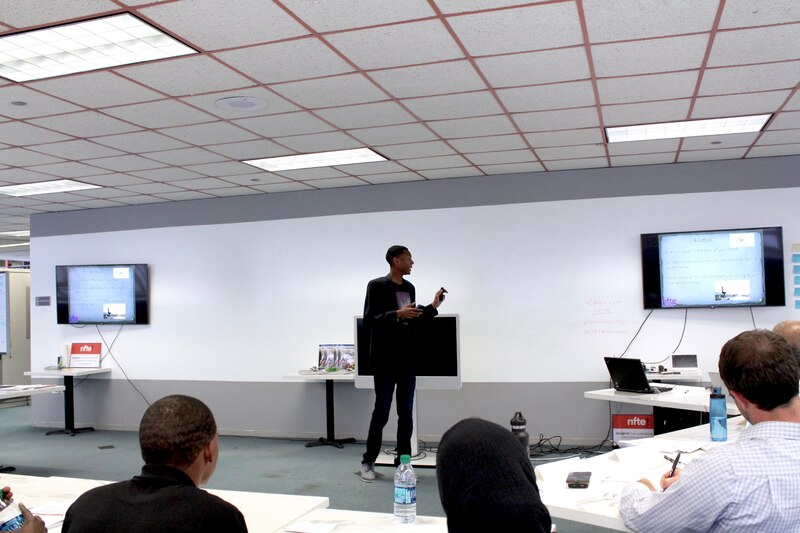
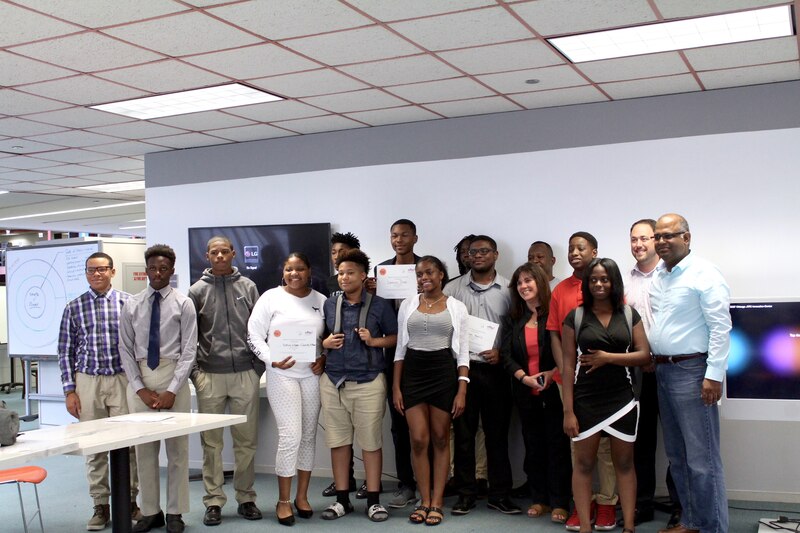
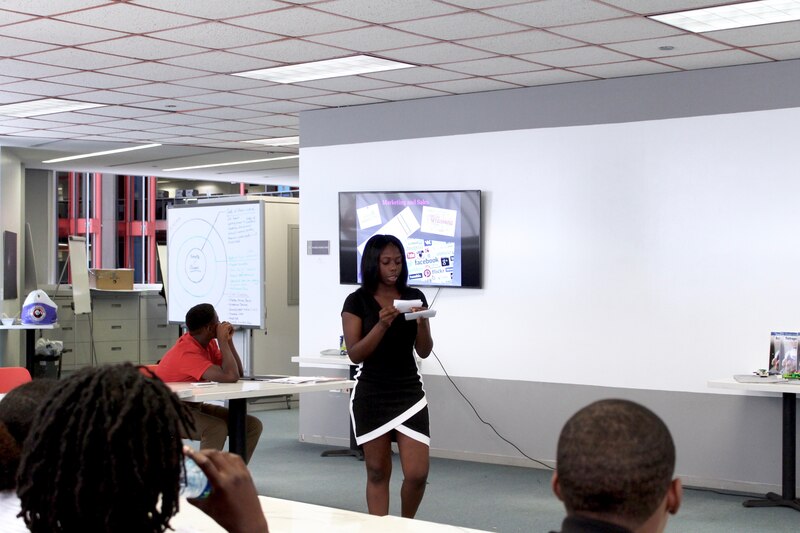
NFTE is a national non-profit that teaches entrepreneurship to teens year-round in local chapters across the country. This summer, the Chicago chapter’s Biz Camp received funding from the Citi Foundation, partnered with the Illinois Department of Innovation & Technology, and paid students $200 for participating. It had a capacity for 24 students, but just 15 registered.
Danny Grey, the Biz Camp instructor, said that he mostly brought in students through “direct, personal recruiting.” He lives in Hyde Park, but he teaches outside of Chicago at Townson High School in South Holland, where he’s concentrated recruiting efforts. He’s had less time to recruit in Chicago itself.
Grey said that this form of intimate recruiting is critical because in Chicago, the biggest obstacle to summer programs is lack of awareness.
“There are some great programs in Chicago,” he said, “but no one knows about them.”
Cameron Jones, a 16-year-old from Bronzeville who attends Von Steuben Metropolitan High School in Albany Park, agreed. Jones, who won second place in the pitch competition (even though he thought he deserved first place), said that he only found out about NFTE because his friend who attended the Biz Camp last year told him about it. Jones said that NFTE should promote its branding.
“Like the backpacks we got with the NFTE logo,” he said. “There needs to be more of those.”
***
But well-known and well-connected organizations are not sufficient
An organization that does have that branding and network is After School Matters.
This summer, ASM is offering 700 summer programs, posting a record for its summer enrollment. Even then, it does not come close to meeting the demand — ASM Chief of Staff Michael Crowley said that there are two or more teens applying for every available spot.
Crowley said that when ASM started in 1991, it partnered with schools and the Chicago Park District and relied on teens to spread the word: “The best recruiting tools are teenagers themselves vouching to their peers.” He said that now, the quality of the local programs and the stipends are the main factors attracting teens.
“It also does help that we’ve built a brand over 27 years,” he added.
To partner with ASM, local programs must apply and pass its requirements, which include background checks of all staff, appropriate space, and high-quality instructors. Crowley said that other than that, programs are free to design their own curricula: “The content [of programs] really ranges all over the place.”
One local program is Elevarte Studio’s Urban Garden Project in Pilsen. On a Thursday afternoon, about a dozen students spread out in Jardin De Las Mariposas Garden. As pop music played softly in the background, some congregated near the planted vegetables to build a compost bin, others sat at the picnic table to paint signs that will be placed around the garden.
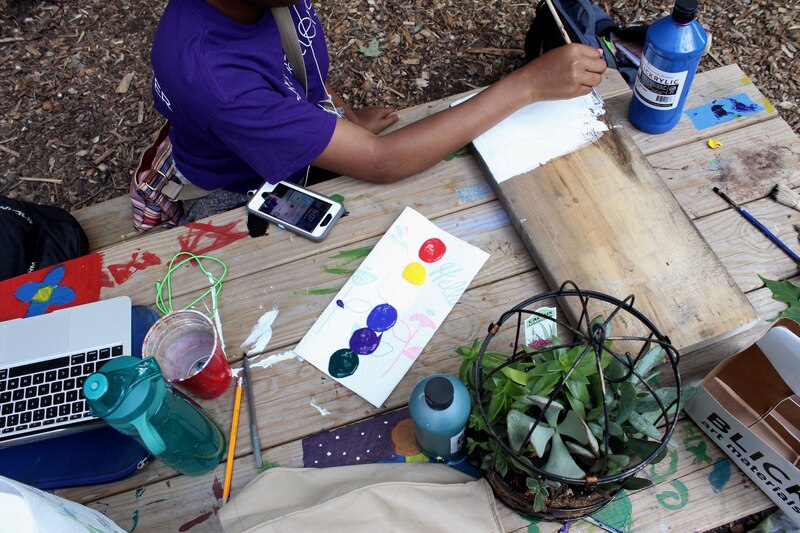
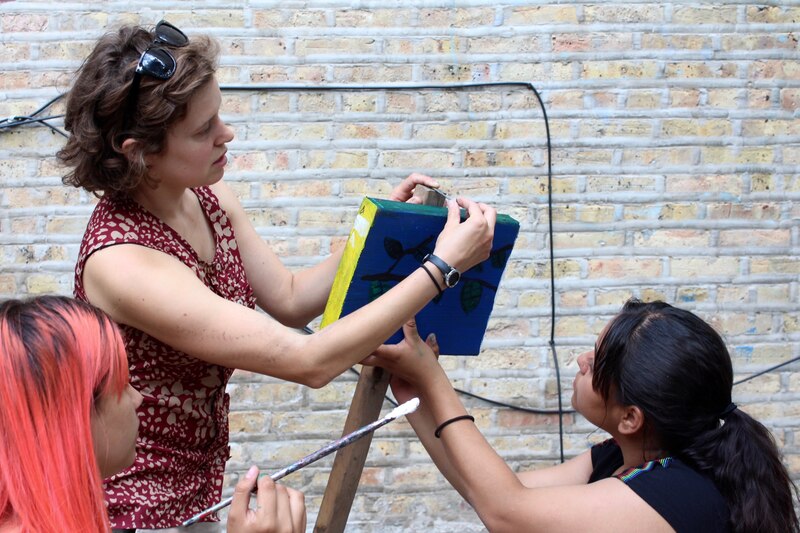
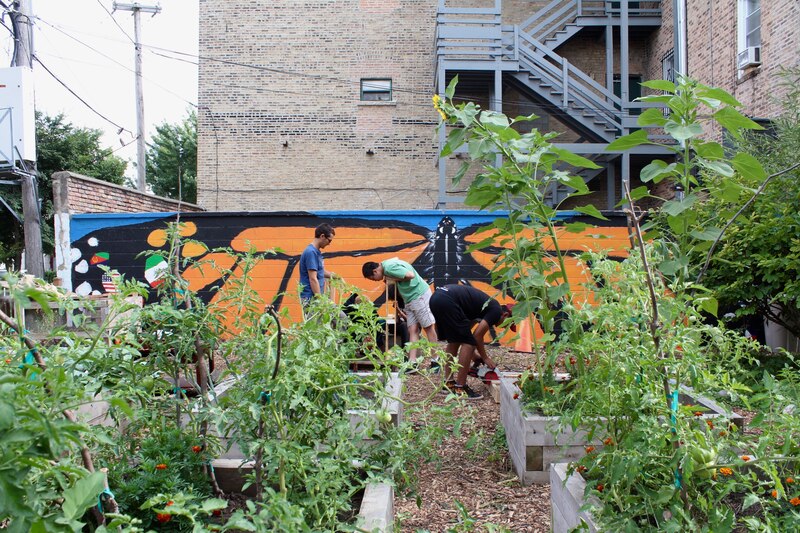
Milan Anderson, the lead teacher of the Urban Garden Project and an environmental science teacher at Perspectives Leadership Academy in Auburn-Gresham, said that the number of applications this year exceeded its 15-student capacity. Anderson said that she personally reached out to students when recruiting, but most students found the program through ASM’s website, or were returning participants.
Makyla Bates, an 18-year-old from Auburn-Gresham who just graduated from Chicago High School for the Arts in Humboldt Park, said that she found the Urban Garden Project by searching for nearby ASM programs.
“You want me to be honest? It’s the money,” she said, because while she’s interested in gardening, “this program is not as real [as other gardening she’s done]. Every summer ASM gets kids to help a garden and then every year the garden is untended again,” she said. “What’s the point?”
The proximity, name, and pay of an ASM program are prevailing reasons why she stayed.
***
While ASM has a broad reach, many students like Bates yearn for more depth in subjects they want to explore.
Jones, the 16-year-old who attended the NFTE Biz Camp, said that he had quit an ASM hip-hop program near him in Bronzeville because it “was just so boring.”
And that’s why specialized programs such as Art of Culture, with ties to the entertainment industry, are still important. The challenge is getting kids in the doors.
At Art of Culture, Smith has been grappling with scarce funds and a name change, but she’s pressed on. On Aug. 15, Art of Culture will host a sound engineering workshop at Dyett for students interested in making their own music.
Smith recognizes that many big Chicago artists, such as Chance the Rapper and Malcolm London, were nurtured by programs like hers. “That is something uniquely Chicago, the lines can really be directly drawn back to these programs.”
At the end of class after Smith announced that the students’ podcast would be broadcast, one of the two students offered to compose an introductory song for it. He said he’s been rapping and making his own music for several years.
“Yeah, I mean,” he said, “I’m trying to just take every opportunity I can get.”


